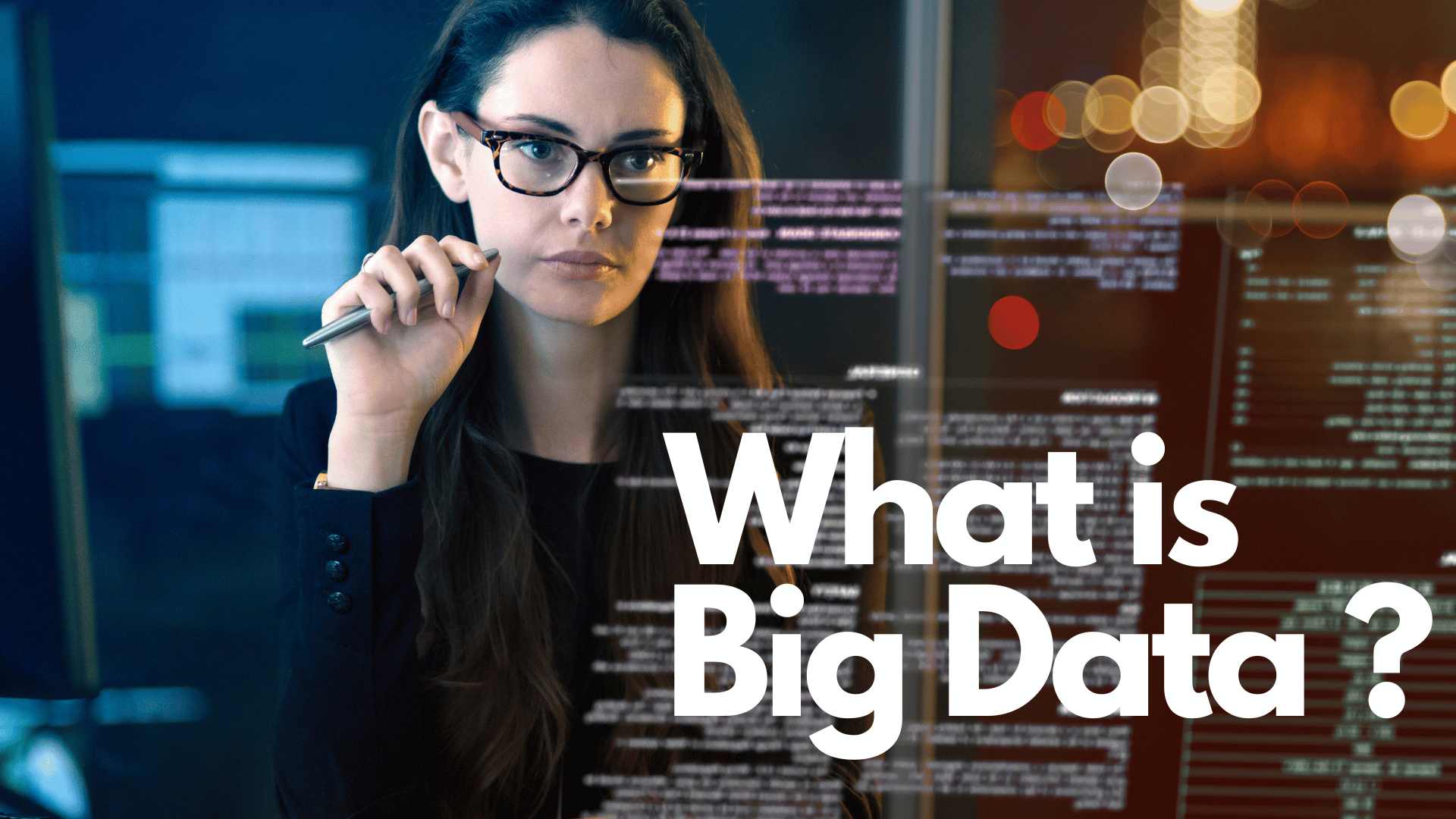Introduction to Big data
Big data is a term suggesting a large volume of data that is both structured and unstructured and that influences business on a daily basis. Big data can be examined for visions leading to improved decisions and moves of strategic business.
Actually, the amount of data does not matter, but something that matters most is what organizations do with the data. Big data is actually a developing concept that implies any kind of large amount of structured, semi-structured, and unstructured data that has the potential to be considered for information.
The exercise of collecting and storing large amounts of information for ensuing analysis is quite old. However, the concept of ‘big data’ is ultimately new.
This concept gained acceleration in the early 2000s when industry analyst Doug Laney expressed the meaning of big data by including the 3 Vs: volume, velocity, and variety.
Nevertheless, big data does not directly equate to any sort of precise volume of data; it is frequently used to define terabytes, petabytes, and also exabytes of data taken over time. The inevitability for big data velocity levies a sole requirement on the fundamental infrastructure. The calculating effort needed for rapid processing of large volumes and diversities of data could override a unique server or cluster of servers.
The Fuss about Big Data
Presently, everybody looks to be discussing big data these days. Big data may be discouraging initially but how it gets analysed makes a quite noteworthy difference in various organizations. When people talk about ‘big data’, they are actually talking about the use of computers to search for developments in huge gatherings of data and information and about the trend that people cannot select as there is a huge quantity of data to examine. The fuss about big data relates to how it is operating so rapidly and consistently that it is uncommon to be thoughtful about what is being processed inside it. The fuss indicates that search results given out are consequences of large disseminated processing and about the power agitating via massive datasets. Many large companies have been concerned about big data for years, but what is innovative is how technology has made it possible for organizations of all dimensions to not just gather data but also to promptly analyze it to make rapid, real-time judgments.
The fuss about the efficacy of big data is that, apart from consumer information, there are several areas where big data can be essentially and effectively applied. For instance, it could enable analytical analysis in a mass of industries where time to market, remaining ahead of the rivalry, and being outside the customer are all dynamic for not only business development but continued one at that point. Fortified with the information of how the market is and where it is about to be, what individuals’ plans and actions are, and what their expected requirements are, businesses could plan all of their plans better and understand the complete profits of recognizing their marketplace and customers well.
The fuss over big data has arisen as companies require searching to accomplish huge amounts of data. The magnitude of massive amounts like huge amounts of data, like yottabytes, for example, may seem a while like something somewhat out of Star Wars, and one day the internet will touch those levels; it is just a matter of time, and then they will require to make up somewhat bigger.
The fuss about big data is that it permits the gathering and investigation of dissimilar types of data like social media, employee details, and business news. All of this data exists in distinct applications with totally diverse data models, but by dragging out this data together into a single data source, perceptive analytics could be carried out.
An interesting feature of the big data approach is that unique, insecurely bound data can still be leveraged by using ‘late data binding’. By using traditional analytic approaches, the relations are usually implemented at the instant of design time, which binds the end user to respond to only the questions that were asked at that time.
The largest companies are endorsing big data products and services very strongly, so something big is on the horizon. Big data has the potential to influence every person in society.
Big data does not actually just revolve around ‘big’. The mnemonics ‘V3’ or ‘V4’ review it well.
The 4 Vs are as below:
• Volume – is the amount – and it is big.
• Velocity – the degree of arrival or capture of data, and that is big also.
• Variety – the complete variety of data and formats to be utilised.
• Veracity – the accurateness, truth or worth of that data.
The technical features are volume and velocity-driven; personal is out, no SQL (that is, more than just SQL) is in, and existing individual data skills are insufficient. The real obstacles are variety and truth. We store data from every device we use or come across, including social media, device instrumentation, voice, financial, image, and video data, because a data expert working for a start-up, business, or the government might find it useful at some point. One of the big things about big data is that if they are correctly directed, you could definitely handle back the power to customers. This could be attained with the same big data you had. There are some reasons behind the current fuss over big data.
The two main reasons are:
a) A lot of data is available. And for this, we should be grateful more to the web, as there are loads of big data sets out there and many of variables for each.
b) The computer power to investigate that it is obtainable. Big data came into fuss among people as, just within the last 10 to 15 years, improvements in the abilities of data processing on both the hardware and software sides made a complete examination of truly confounding amounts of data potential.
Cloud Computing and Big Data
Cloud computing is the on-demand delivery of IT resources over the internet as a pay-as-you-go service. Cloud computing has become the backbone of big data. Now companies are using cloud computing to store vast amounts of data on cloud servers, which are accessible from any place in the world.
Businesses are combining data, analytics, and human insights in the digital age. Cloud computing, which offers flexible collaboration tools, scalable resources, and quick access to data, has revolutionized this. The big data cloud boosts innovation, cost-effectiveness, and productivity by combining big data analytics with cloud services. Whether a company uses a public, private, or hybrid cloud, it must have a flexible cloud strategy in order to customize services for optimal effect and transform data into useful insights.
Why are businesses using big data?
Businesses are creating and using big data for market analysis. With the help of big data and data analytics tools, businesses can identify potential market gaps or market opportunities that they are missing, which helps them outperform their rivals.
Big data also helps companies understand human behaviour and analyse patterns in their product returns. By identifying these patterns, they can reduce the losses due to return of the product by a customer.
Real-time data analysis over real-time data that is being created helps a business become more efficient.
Big data helps uncover areas of innovation where businesses can use big data to improve their existing products and also create new innovative products as per market demand.
Big data has a large impact on the decision-making processes of large and small companies. A business may gather data from different places and analyse that data using tools like Apache Hadoop, Spark, etc. Later, they can analyse this data using cloud-based data analytics tools.





